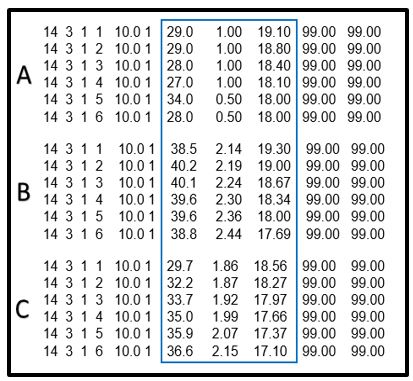Evaluation of the WRF as a tool to obtain the necessary meteorological data in environmental studies with AERMOD
Main Article Content
Abstract
To characterize the behavior of the atmospheric contamination in a given area from the AERMOD dispersion model, it is necessary to take into account the characteristics of the terrain and the weather conditions, the latter being generally obtained at meteorological stations. However, sometimes these data can present problems such as: not being representative of the place, having a high cost or missing data; which has caused numerous attempts to estimate them from numerical models. In the present work, the evaluation of the WRF is carried out as an alternative tool to obtain the necessary meteorological data in environmental impacts studies with the AERMOD dispersion model. To carry out the study, the numerical outputs of the WRF are available for 2 source (Diesel Battery of Cruces and Diesel Generator Sets of Junco Sur) and with the meteorological variables measured at the Cienfuegos station corresponding to the first 10 days of the month of March of 2014. Within the results, we see that the concentrations obtained from modeled data tend to be slightly higher than those obtained from measure data, which does not affect the environmental impact studies, on the contrary, it allows to have a greater be careful when establishing measures or protocols related to maximum admissible concentrations and air quality.
Downloads
Article Details

This work is licensed under a Creative Commons Attribution-NonCommercial 4.0 International License.
Those authors who have publications with this journal accept the following terms of the License Attribution-NonCommercial 4.0 International (CC BY-NC 4.0):
You are free to:
- Share — copy and redistribute the material in any medium or format
- Adapt — remix, transform, and build upon the material
The licensor cannot revoke these freedoms as long as you follow the license terms.
Under the following terms:
- Attribution — You must give appropriate credit, provide a link to the license, and indicate if changes were made. You may do so in any reasonable manner, but not in any way that suggests the licensor endorses you or your use.
- NonCommercial — You may not use the material for commercial purposes.
- No additional restrictions — You may not apply legal terms or technological measures that legally restrict others from doing anything the license permits.
The journal is not responsible for the opinions and concepts expressed in the works, they are the sole responsibility of the authors. The Editor, with the assistance of the Editorial Committee, reserves the right to suggest or request advisable or necessary modifications. They are accepted to publish original scientific papers, research results of interest that have not been published or sent to another journal for the same purpose.
The mention of trademarks of equipment, instruments or specific materials is for identification purposes, and there is no promotional commitment in relation to them, neither by the authors nor by the publisher.
References
EPA . (s.f.). Recuperado el 2021, de hhtps://www.epa.gov/scram/air-quality-dispersion-modeling-related-model-support-programs#mmif
EPA. (2018). Guidance on the Use on the Mesoscale Model Interface Program (MMIF) for AERMOD. Applications. Estados Unidos.
EPA. (2019). User's Manual. The Mesoscale Model Interface Program (MMIF). Estados Unidos.
Grisales Vargas , S. C., Cubaque López , H., & Agudelo Cadavid , R. M. (2016). Contaminantes en el Valle de Aburrá 2008 - 2016. Colombia: Facultad Nacional de Salud Pública, Universidad de Antioquia.
Muiña, F. G. (2020). Evaluación del WRF como herramienta alternativa para determinar el rendimiento de un sistema fotovoltaico en condiciones de cielo despejado. La Habana, Cuba: Presentado como requisito para optar por el Título de Licenciatura de Meteorología, Facultad de Medio Ambiente, Instituto Superior de Tecnologías y Ciencias Aplicadas.
National Center for Atmospheric Research. (2015). Manual ARW Version 3 Modeling System User's Guide. s.I.: Mesoscale & Microscale Meteorology Division.
Sierra, D. (2014). Evaluación del modelo fotoquímico CCATT - BRAMS para su implementación en Cuba. La Habana, Cuba: Instituto Superior de Tecnologías y Ciencias Aplicadas.
Turtos, L., Capote, G., & Fonseca, Y. (2013). Assessment of the WRF model implementation in Cuba addressed to diagnostic air quality modeling. Atmospheric Pollution Research (4), 64 - 74.
Verde, A. V. (2014). Evaluación del pronóstico del viento del modelo Wheather Research Forecast (WRF) en torres de prospección eólica. La Habana, Cuba: Presentado como requisito para optar por el Título de Licenciatura en Meteorología, Facultad de Medio Ambiente, Instituto Superior de Tecnologías y Ciencias Aplicadas.
Vidal, O., & Pérez, A. (2017). Estimación de la dispersión de contaminantes atmosféricos emitidos por una Industria Papelera mediante el modelo AERMOD. Ingeniería, Colombia, 23(1).

